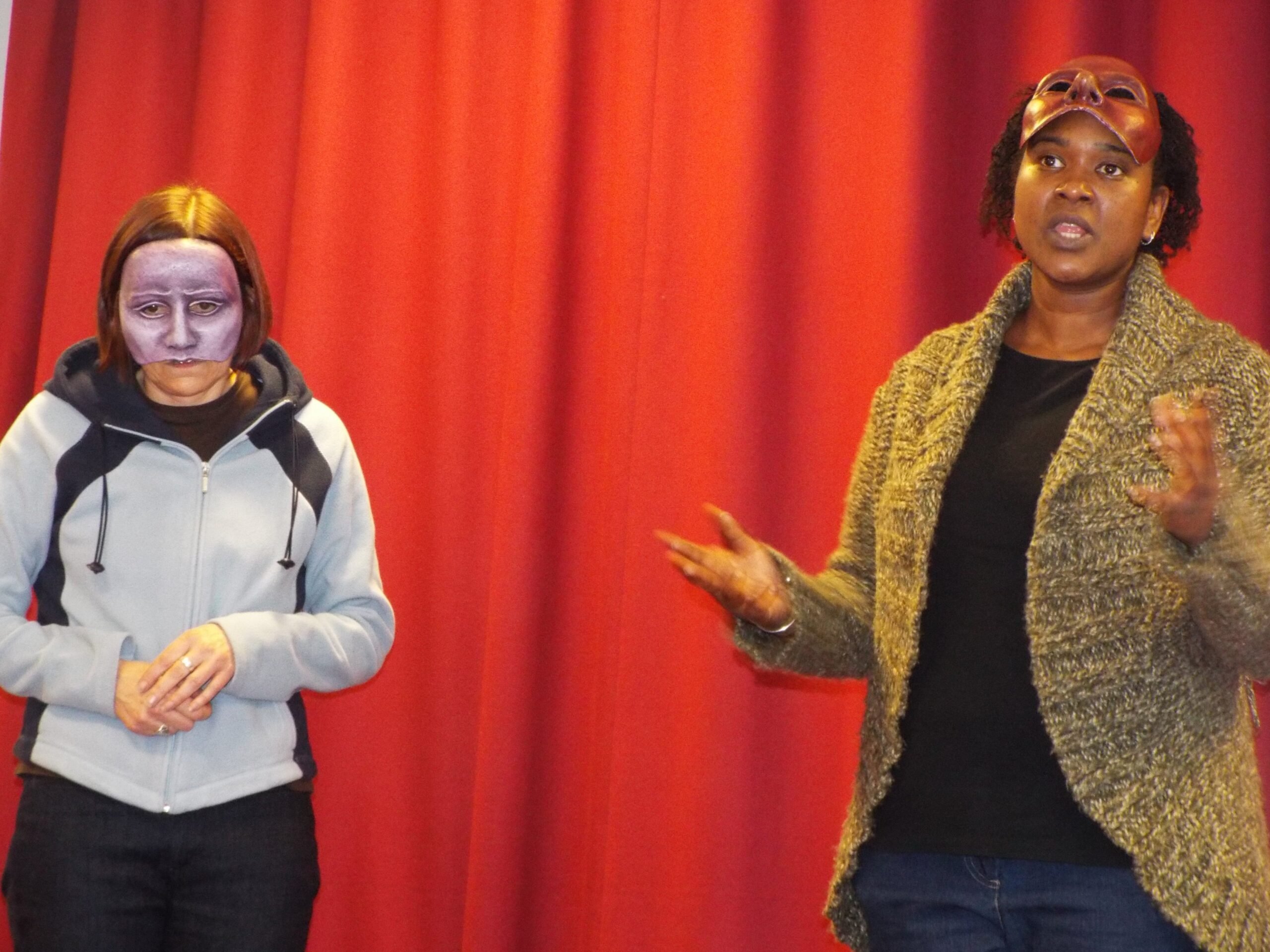
Creating characters and dilemmas
Theatre can be a powerful training tool for community workers. Louise Heywood describes Geese Theatre Company’s work with criminal justice and social welfare professionals.
Geese Theatre Company, based in Birmingham, works within the UK criminal justice system. Much of our core work takes place in custodial settings like prisons, special hospitals and young offender institutions, so it is fairly hidden from the general public and other arts professionals. Our community-based work is also mainly delivered in ‘closed’ settings, for example, as part of programmes run by the National Probation Service.
Sharing methodology
We felt it was important to share our methodology as widely as we could. First, because these methods are applicable far beyond criminal justice, and second, as a way of allowing others into the more hidden arenas in which we work.
It is about listening to the people we are working with, crossing over ‘the wall’ and exploring their experience of the world and creating material in response to that
We have therefore developed a range of training programmes for criminal justice and social welfare professionals, theatre practitioners, other artists and students. Every year we design and deliver over 50 training and professional development inputs using a variety of structures, inlcuding interactive performances and courses exploring drama-based techniques for working with groups.
Interactive performances
Interactive performances are created to explore themes that are pertinent to audience members’ roles. These can range from engaging with families with complex needs for social workers to understanding sexual grooming for sports safeguarding bodies. The theme is explored through fictionalised characters who mirror the audience and some of the challenges they may face.
Small-group audience discussion is built into the performance and characters are advised and steered through the on-stage dilemmas. This type of training mirrors our work with offenders in that we provide a structure for individuals to explore solutions and responses rather than teach or show the right answers.
The journey from concept to creation for this type of performance begins with the needs of the commissioning organisation and material is devised in close consultation with representatives from that agency.
In a recent piece of work for West Mercia Police around vulnerability, our experience of working with men who perpetrate domestic abuse combined with our partner’s expertise around police processes allowed us to create a piece that had emotional depth and authenticity, as well as complex and realistic dilemmas for the audience.
Training courses
An example of one of our training courses is The Other Side of the Wall (TOSOW), a three-day course in the use of theatre and drama-based methods with those who have, or who are at risk of, offending. TOSOW is open to all practitioners, including arts, criminal justice and social welfare professionals and students.
Participants learn to create and facilitate stimulus scenes that can be used to examine the links between internal processes (thoughts, feelings and beliefs) and external behaviour. They are introduced to a variety of ways to involve their groups in scenes and images to explore other perspectives or practise new skills. They are also taught how to use active thematic exercises to explore themes like goal-setting and problem-solving.
A responsive approach
The approach we use with our criminal justice groups is very much about starting from ‘where they are’, exploring ‘where they would like to be’ and what might get in the way of them reaching those goals. So although we teach particular techniques on TOSOW, we place great emphasis on a responsive approach.
It is about listening to the people we are working with, crossing over ‘the wall’ and exploring their experience of the world and creating material in response to that. The stimulus scenes we create are often non-verbal and we ask our group members to fill in the dialogue as well as exploring the thoughts and feelings that lie beneath.
In this way we are creating characters together and participants can work though those characters at one step removed rather than on a personal level. This can provide a necessary emotional safety net.
This responsive style is mirrored in TOSOW that may involve teachers, therapists, probation and prison staff and artists from different disciplines. Because of this variety, we limit the number of participants to ten per course so that everyone has the opportunity to try out for themselves the techniques they have been exploring and to practise integrating them into their own skills base.
Louise Heywood is Deputy Artistic Director of Geese Theatre Company.
www.geese.co.uk
Tw @GeeseTheatre
Join the Discussion
You must be logged in to post a comment.